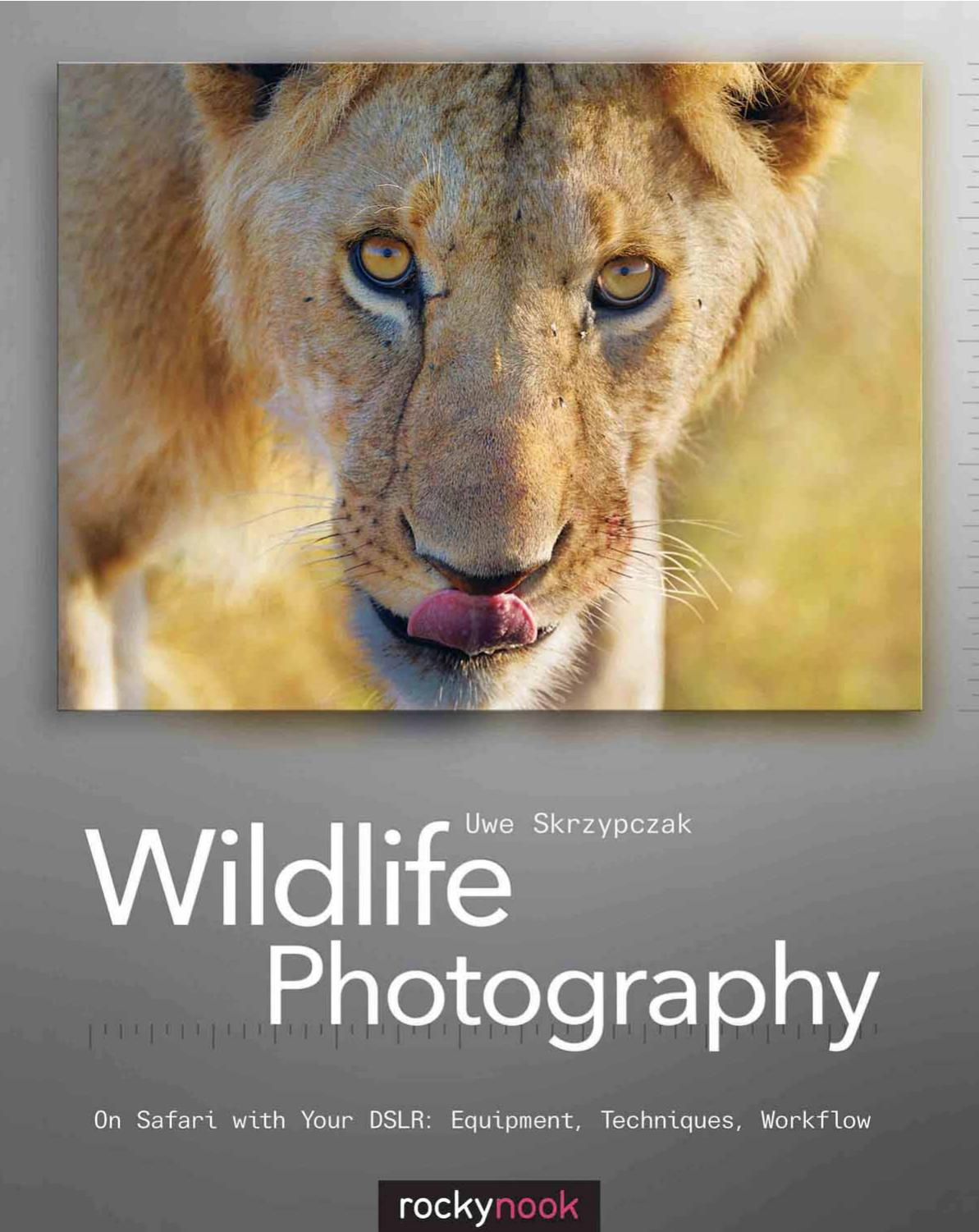Wildlife Photography by Uwe Skrzypczak

Author:Uwe Skrzypczak
Language: eng
Format: epub, pdf
Publisher: Rocky Nook
Published: 2010-03-19T16:00:00+00:00
This crop represents an image taken with the equivalent of a 1400 mm lens in APS-C format (or a 2000 mm lens for a full-frame camera). The only practical way to take photos like this is by using your longest telephoto lens coupled with a teleconverter.
Black rhino with calf: Ngorongoro Crater, June 2005, Nikon D2x, AF-S VR 200-400mm f/4 lens & 1.7x teleconverter, ISO 360, 1/200 sec. at f6.7
Rhinos can be dangerous although, as Professor Grzimek proved, they often mount fake charges. Sometimes, even the people whose job it is to protect them have been fatally injured by rhinos charging at 25 mph. They have weak eyesight but can scent other animals over distances of many miles. A rhino mother with a calf in tow will stop every few yards and smell the air in all directions to make sure that her baby is not in danger from a predator.
In bright sunlight, and at any distance, you will need eagle eyes to be able to tell a dozing rhino from a weather-beaten termite mound. If you manage to make out a rhino, you “only” need to find a track that leads near enough to it to take a photo. Rhinos are mostly found in areas where off-road driving is prohibited. You can work around this problem in the early morning light or under cloudy skies by using an extreme telephoto lens, as in the image above. You might even be lucky enough to get sufficiently near to shoot using a shorter lens, as I was for the image on the right.
Photo opposite Black rhino at sunrise: Ngorongoro Crater, June 2005, Nikon D2x, AF-S VR 200-400mm f/4 lens, ISO 180, 1/125 sec. at f4.0
Download
This site does not store any files on its server. We only index and link to content provided by other sites. Please contact the content providers to delete copyright contents if any and email us, we'll remove relevant links or contents immediately.
| Gardens | Landscapes |
| Plants & Animals | Underwater |
Shoot Sexy by Ryan Armbrust(17142)
Portrait Mastery in Black & White: Learn the Signature Style of a Legendary Photographer by Tim Kelly(16484)
Adobe Camera Raw For Digital Photographers Only by Rob Sheppard(16387)
Photographically Speaking: A Deeper Look at Creating Stronger Images (Eva Spring's Library) by David duChemin(16161)
Bombshells: Glamour Girls of a Lifetime by Sullivan Steve(13108)
Art Nude Photography Explained: How to Photograph and Understand Great Art Nude Images by Simon Walden(12348)
Perfect Rhythm by Jae(4621)
Pillow Thoughts by Courtney Peppernell(3397)
The Book of Joy by Dalai Lama(3217)
Good by S. Walden(2915)
The Pixar Touch by David A. Price(2739)
Fantastic Beasts: The Crimes of Grindelwald by J. K. Rowling(2543)
A Dictionary of Sociology by Unknown(2518)
Humans of New York by Brandon Stanton(2379)
Read This If You Want to Take Great Photographs by Carroll Henry(2303)
Stacked Decks by The Rotenberg Collection(2270)
On Photography by Susan Sontag(2130)
Photographic Guide to the Birds of Indonesia by Strange Morten;(2088)
Insomniac City by Bill Hayes(2083)
